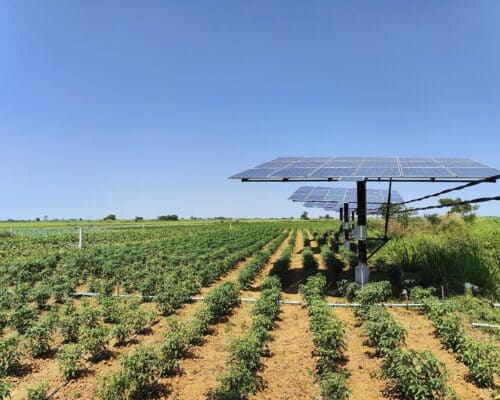Why is LNG Not Ideal for the Indonesian Energy Transition?
Photo ShutterStock
27 December 2022 – by Tim Daiss
Indonesia Energy Transition
Is LNG an ideal bridge fuel for the Indonesian energy transition? The short answer is no.
Indonesia is the world’s fourth most populous country, with over 250 million people. It is the most populated country in Southeast Asia and is the region’s largest economy. Its economic growth was posted at 3.7% in 2021 as the country stepped away from COVID-19 lockdowns.
Economic momentum continued well into 2022, with growth coming in at 5% year-on-year and a World Bank projected growth rate of 5% for 2023.
This resource-rich nation is the world’s fourth-largest coal producer and Southeast Asia’s largest natural gas supplier.
Meanwhile, Indonesia’s total primary energy consumption has grown in lockstep with its economic expansion. Its total energy consumption also grew by 16% between 2010 and 2020.
Indonesia’s Energy Mix: Fossil Fuels vs Renewable Energy Sources
However, Indonesia’s overreliance on fossil fuels to drive that economic growth is problematic. Coal, natural gas and crude oil accounted for 88% of its energy generation needs in 2020.
Though the country has reduced petroleum’s share in its power generation energy mix, dropping since 2018, the fuel still made up the second-highest portion at 32% in 2020. Moreover, between 2010 and 2019, the country’s use of coal more than doubled. Its fossil fuel usage has made Indonesia the world’s fifth-largest greenhouse gas (GHG) emitter.
Natural Gas Usage
In 2022, Indonesia earmarked more natural gas usage to combat energy shortages, even as it sought to trim coal usage. However, after the country imposed a short-lived ban on coal exports in early 2022, millions of consumers in the heavily populated Java, Madura, Bali and other islands suffered power outages.
To its credit, Jakarta recently slapped a levy on coal that will kick in during the first quarter of 2023. A government fund will also be established with money collected from coal producers. However, coal will hold a significant portion of the national energy mix for power generation in the electricity sector. This is despite government plans to slowly reduce its relative usage by 2050.
Diverting LNG Cargoes
A major LNG exporter, Indonesia is also earmarking more natural gas usage by diverting liquefied natural gas cargoes for domestic consumption. As such, gas as part of its power generation mix is projected to increase from 17.8% in 2013 to 22.4% in 2025. It will increase to a troubling 24% in 2050, with the fuel meeting nearly one-quarter of the country’s energy needs. In comparison, most developed nations have pledged to be carbon neutral by that date.
Gas’ Negative Effect
Indonesia’s move to use more of its gas for domestic consumption will have several adverse effects. First, more fossil fuel usage will keep its carbon and greenhouse gas emissions elevated. Gas, for its part, still emits around 50% of emissions, as does coal when used for power production in power plants. As such, gas is not a viable transition fuel between coal and renewables.
Secondly, removing more LNG from the global gas supply will put even more upward pressure on prices for the fuel. This will negatively impact countries in the region that haven’t yet built out renewable energy infrastructure, including Sri Lanka, Bangladesh and Pakistan. These high fuel prices are already causing a corresponding recession, as well as inflationary and even political headwinds in the three nations.
Similar to its neighbours in the region, the way forward for Indonesia would be to pivot away from gas usage. Thus, it would lower its overall carbon emissions.
Indonesia Energy Transition Partnership
At the COP27 summit in Egypt last month, Indonesia pledged to reduce emissions from foreign sources and launched the Indonesia Energy Transition Partnership with USD 20 billion to help finance the energy transition.
But that’s not enough. Indonesia would need to invest USD 150 billion to USD 200 billion per year in low-carbon programs over the next nine years to meet its goal of reaching net zero carbon emissions by 2060 or sooner, according to an International Energy Agency (IEA) report.
To provide that level of funding, Jakarta has to phase out politically sensitive fossil fuel subsidies and reallocate more investments. It must also generate revenue from the recently passed carbon tax, the IEA report adds.
Notably, the economic advantages of exploring renewable energy resources and building renewables outweigh developing more fossil fuel infrastructure. Of the renewables (mostly wind and solar power) that came on stream in 2020, nearly two-thirds, some 62%, were less expensive than the cheapest new fossil fuels. Indonesia needs more new and renewable energy projects for primary energy supply and energy transition.
by Tim Daiss
Tim has been working in energy markets in the Asia-Pacific region for more than ten years. He was trained as an LNG and oil markets analyst and writer then switched to working in sustainable energy, including solar and wind power project financing and due diligence. He’s performed regulatory, geopolitical and market due diligence for energy projects in Vietnam, Thailand and Indonesia. He’s also worked as a consultant/advisor for US, UK and Singapore-based energy consultancies including Wood Mackenzie, Enerdata, S&P Global, KBR, Critical Resource, and others. He is the Chief Marketing Officer (CMO) for US-based lithium-sulfur EV battery start-up Bemp Research Corp.
Read more



